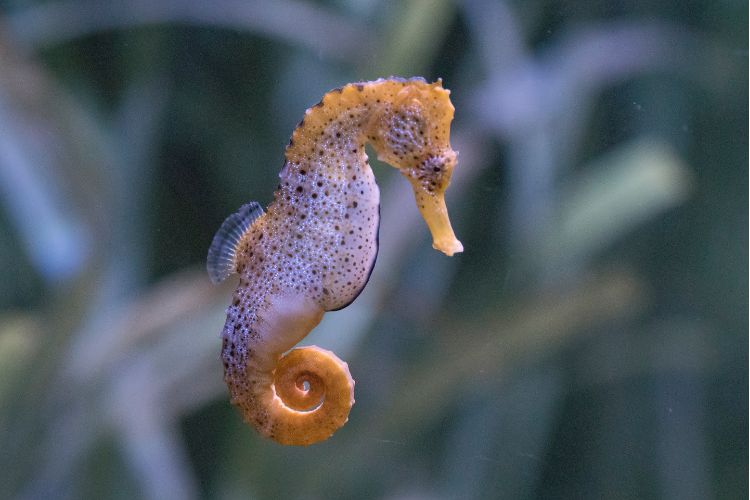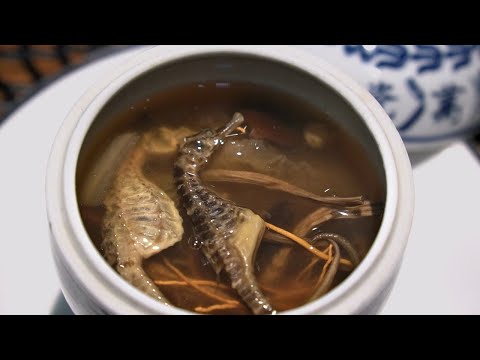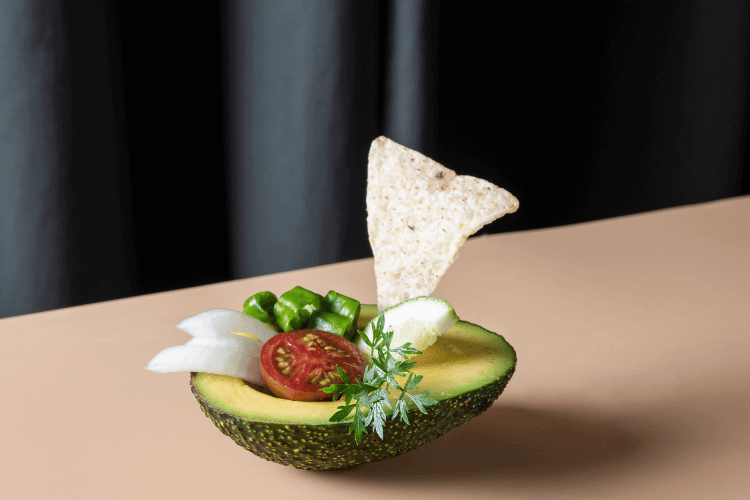Seahorses are truly remarkable and mysterious beings that have captivated the imagination of explorers and food enthusiasts alike.
Their ethereal beauty and unique characteristics have left us pondering an intriguing question: “Can You Eat Seahorses?”
In this article, we’ll take a deep dive into the world of seahorses. We’ll unravel the secrets of these enigmatic creatures.
Plus, we’ll explore their cultural significance, especially in some Asian countries, and determine if they could become part of your culinary journey.
As we embark on this escapade, we’ll also unveil the flavors and textures that seahorses offer. So, let’s set sail on this adventure and uncover the mysteries that surround these captivating sea creatures.
What Makes People Think Seahorses Are Edible?

Seahorses, the stars of our story, are undeniably captivating marine creatures. There are multiple species of seahorses, each with its special characteristics and habitats.
These fish, although unusual in appearance, are true marvels of the ocean.
They have a distinctive upright posture, horse-like heads, and an ability to grasp onto objects with their curly tails. This physique is part of their charm and plays a role in our exploration of their culinary potential.
While we won’t be dwelling on the intricacies of marine ecosystems, you should know that seahorses serve as vital links in the underwater food chain.
For starters, they often rely on small marine organisms like brine shrimp as a part of their diet. Other than that, there are quite a few other fish species that rely on seahorses as their main food source. That includes marine creatures like tuna and dorado.
Seeing these fish nibble on seahorses signals that the tiny critters are safe to eat.
Plus, the distinctive qualities and habitats of seahorses set the stage for our culinary adventure. On top of that, we’ll delve into the intriguing question of whether these charming marine creatures can be part of your next meal.
Can You Eat Seahorses? What Do They Taste Like?
Now that you have a little background on seahorses, let’s tackle the big question head-on: Can you eat the tiny fish?
The answer is a bit complicated. While technically it’s safe to eat seahorses, the real question is, should you?
In some parts of the world, particularly in select Asian countries, seahorses have been on the menu for centuries. They’re often considered a delicacy and people believe that they have medicinal properties.
However, it’s crucial to consider the ethical and environmental implications before indulging in this culinary experience.
Flavors and Textures
Those who have indulged in seahorse cuisine describe the taste as subtly sweet, with a hint of seafood umami. Seahorses, when prepared in traditional dishes, take on the flavors of the accompanying ingredients.
This makes them exceptionally adaptable to various culinary styles.
Besides that, the texture of seahorses can vary depending on how you prepare them.
When cooked, the tiny marine creatures tend to be somewhat rubbery, similar to certain types of seafood like calamari.
They are known to absorb the flavors of the dishes they are cooked in, making them a versatile ingredient in soups and stews.
Lastly, the texture may not be as tender as some more common seafood, but it’s distinct and adds a unique touch to the overall dish.
A Culinary Delicacy
In certain cultures, especially in China, locals incorporate seahorses into traditional dishes and soups. Most people in the area believe the marine creatures have aphrodisiac qualities and can boost overall health.
Cultural Significance
The consumption of seahorses isn’t merely about food; it’s deeply rooted in traditional Chinese medicine and cultural practices.
For many, seahorses symbolize good luck, virility, and prosperity.
Seahorses are particularly important in certain Asian countries, where their use in traditional medicine has a long history.
Understanding these cultural ties is essential in the larger context of whether or not it’s acceptable to eat these enchanting creatures.
Ethical Concerns
As the global demand for seahorses grows, so do concerns about their population sustainability. Overfishing and destructive harvesting practices have taken a toll on seahorse populations.
They’re particularly vulnerable due to their slow reproduction rates.
Environmental Impact
The extraction of seahorses from their natural habitats, including coral reefs, can have far-reaching consequences on marine ecosystems.
That’s because their existence is intricately linked with the well-being of other marine species, as they often help maintain a balanced food chain.
Sadly, the international trade of these critters can lead to the degradation of these fragile ecosystems, further highlighting the ethical and environmental dilemmas surrounding seahorse consumption.
This means that while it’s technically possible to eat seahorses, it’s a practice that comes with significant ethical, cultural, and environmental considerations.
How Do People Eat Seahorses?

Exploring how people eat seahorses is a fascinating journey through culinary traditions and practices. While we’ve discussed the taste and texture of seahorses, understanding how we prepare the fish is equally important.
Traditional Preparation
In some Asian countries, particularly China, people integrate seahorses into traditional dishes and remedies. Locals will often dry the marine creatures and then use them as an ingredient in soups and stews.
The drying process concentrates their flavors and medicinal properties.
Culinary Uses
In the culinary realm, we incorporate seahorses into dishes that are rich in flavors and ingredients. Their distinct taste and texture allow them to blend well with various herbs, spices, and sauces.
As we mentioned earlier, they absorb the flavors of the dishes they’re cooked in, adding their special touch.
Can You Eat Seahorses Raw?
Eating seahorses raw is a less common practice, primarily due to the potential health risks associated with consuming raw seafood.
Raw seahorses, if consumed, would likely maintain their distinct sweet and subtly seafood umami flavors, but the texture may be more pronounced in this state.
Moving on, it’s important to note that consuming raw seahorses, like any raw food, carries potential health risks, including exposure to harmful bacteria.
Therefore, if you’re considering trying seahorses as a culinary experience, it’s advisable to follow traditional preparation methods, which usually involve cooking or drying them thoroughly.
While seahorses can be consumed in various ways, it’s essential to approach their preparation with cultural respect and an understanding of the potential ethical and environmental implications.
Wrapping Up
Can you eat seahorse? The enigmatic seahorse poses a culinary dilemma. While technically edible, ethical, environmental, and cultural considerations weigh heavily on this matter.
We can’t ignore the impact on seahorse populations and marine ecosystems. So, before savoring these marine wonders, we must reflect on their vital role in the oceans and the rich cultural tapestry that surrounds them.
Finally, when it comes to flavor, seahorses are subtly sweet with a distinct texture.






